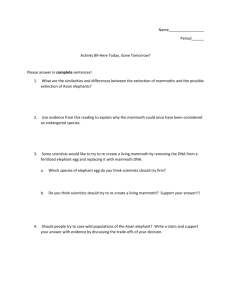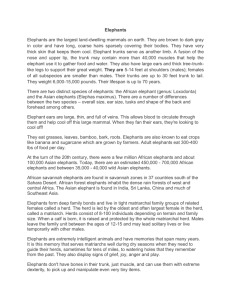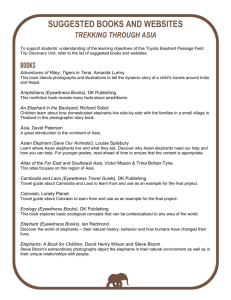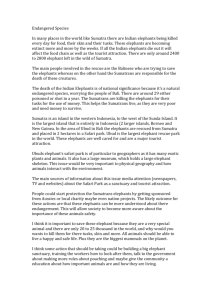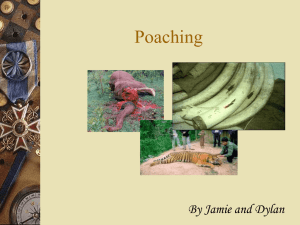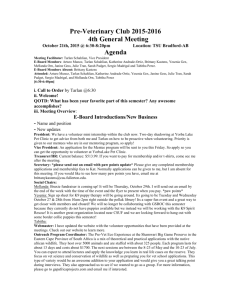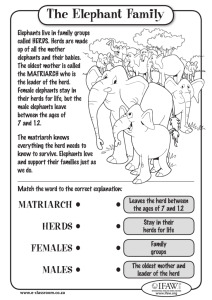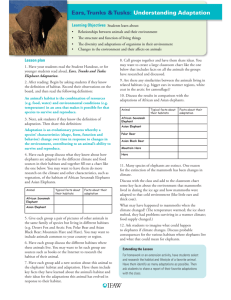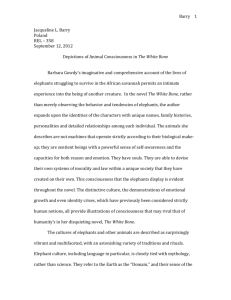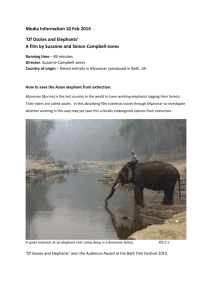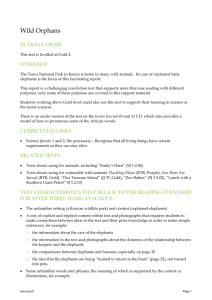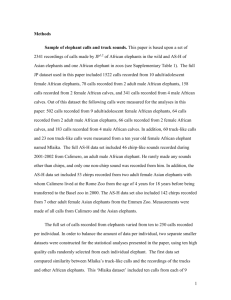The Asian Elephant
advertisement
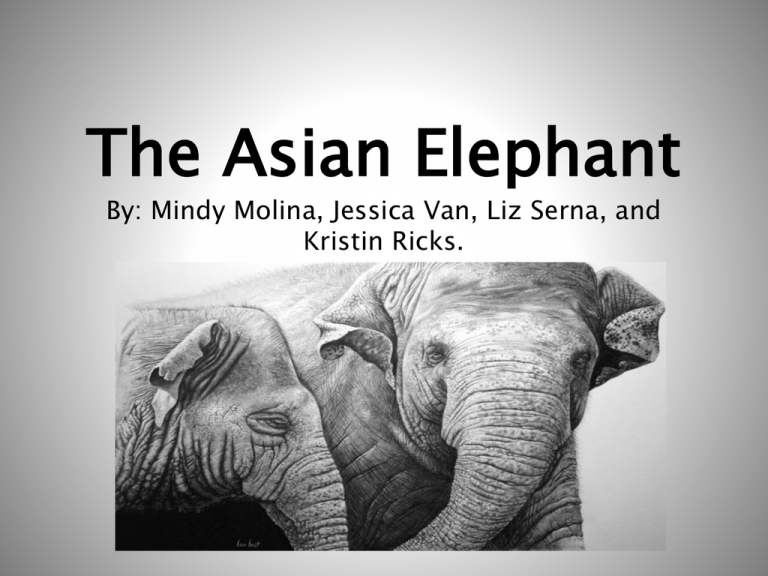
The Asian Elephant By: Mindy Molina, Jessica Van, Liz Serna, and Kristin Ricks. Common Name: Asian Elephant Latin Name: Elephas maximus Classification: Kingdom= Animalia Phylum= Chordate Class= Mammalia Order= Proboscidea Family= Elephantidae Genus= Elephas Species= Elephas maximus • The life cycle of the elephant is remarkably similar to that of an average human being. • Live to about 60 - 70 years • Look after the orphaned baby if the mother dies. • Can bear young at age 16+. • Are fully grown at 20 years old. • Are in their working prime between 20-40. • Begin to slow down at 40. • Are on light duties only when they reach 50. • Primary consumer (Herbivore) • 2nd on Hierarchy level 3rd Trophic level Asian Elephant/ 2nd Trophic level Producer/1st Trophic level • Asia, India, Bangladesh, Sri Lanka, Indochina, and parts of Nepal and Indonesia. • Perferred Habitat? - Forest areas Interaction with other organisms • Asian Elephants don't have a problem with interacting with other organisms. They are usually in large herds, so they never feel attacked. Organims that depend on Asian Elephants for survival • Adult Asian Elephants have no natural predeotors, but young elephants may fall prey to tigers. Organisms that Asian Elephants depend on for survival • Asian Elephants are herbivores, so therefore, they depend on grass, trees, leaves, shurbs. Their diet varies from acacia trees to wild mangos. It will basically eat any type of fruit. Tiger Asian Elephants Grass Trees Shrubs Monkeys Leaves Mangos Past-Present • This is the biggest threat to the continuing survival of the Asian elephants. • The main cause of the lost of the natural forest that elephants require to survive is pressure from human population growth. • The clearance of land has not only resulted in large net losses of territory but also the fragmentation of habitat. This fragmentation breaks up wild populations into herds and groups that are often too small to be viable. • The breaking up of elephant population also leads to inbreeding and the loss of the necessary genetic diversity to sustain population viability over the long term. • Cultivation, irrigation canals, and dams have already blocked many traditional migratory pathways fragmenting the once wide-ranging elephant population into smaller and more isolated groups. Preservation YouTube - The Asian Elephant - Human Population



